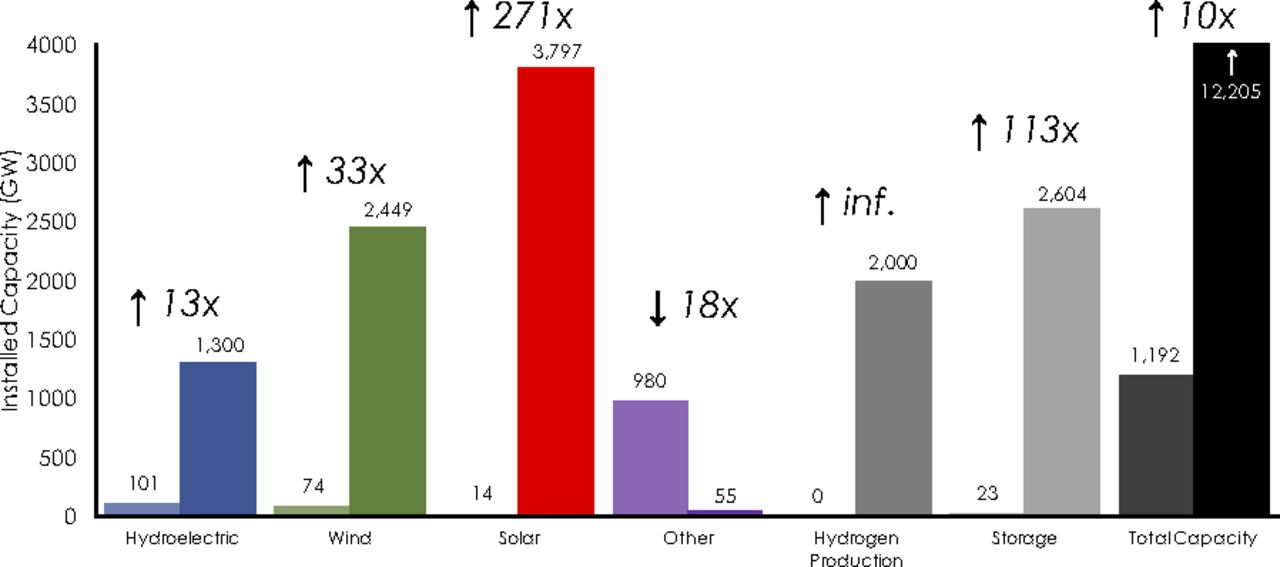James Conca at Forbes has some details about the lawsuit Jacobson has filed to suppress criticism.
Nextbigfuture will be tracking this case. When Jacobson is proven wrong in court or if his libel lawsuit is tossed then there will be regular reminders of his multiple failures and errors.
A copy of the 47 page lawsuit filing is here.
Jacobson v. National Academy of Sciences, Docket number(s): 2017 CA 006685 B Court/Admin Entity: D.C. Super. Ct.
There is an initial scheduling conference for the case on Feb 2, 2018
Provided the personal injury victim or their attorney has the Defendant served and has filed the necessary proof of service, the next step in a District of Columbia Civil case is the Initial Scheduling conference. At this hearing, the attorneys and the court select a “Track” for the case. Parties can select one of three “tracks,” Track I, II or III. The Track is a Scheduling Order, setting forth the dates by which discovery must be completed and/or pleadings are to be filed with the Court. For most personal injury cases, Track II is selected.
The Scheduling Order sets forth the following dates: First is the date by which Discovery Requests and Witness Lists are to be filed, as well as the Plaintiff’s 26(b)(4) Statement (Expert witness designation) is to be filed. Therefore all written discovery, motions for examinations, and fact witness lists must be filed by this date. Of most importance is the filing of the Plaintiff’s 26(b)(4) statement.
Jacobson did not correct the original paper and has a $10 million lawsuit only against one of the writers of the critical paper. Jacobson targeted the one who did not work for an institute with its own legal team.
– assumes a nuclear war every 30 years or so in order inflate the carbon generated from nuclear enertgy
– assumes the rate that we can build renewable energy systems is ten times greater than we’ve ever done, with no regulatory issues that would slow renewable projects
– assumes that 15 million acres covered by wind and solar would have no environmental impacts or public concerns even though that much area would exceed all the roadways, building surfaces and human-covered land in existence today
– assumes that intermittency (wind stops blowing, sun sets) is not an important issue and can be dealt with easily with no baseload power, which hasn’t happened so far and is why we install so much natural gas alongside wind
– assumes cost is no problem and that costs will continue to go down for the next 50 years, even for steel, copper, cement and rare earth elements, unlikely in the extreme
– assumes that scaling technologies up from the lab to the field is trivial, contrary to every single technology we have ever developed
– assumes unlimited hydroelectric power as backup, with new installations equivalent to 600 Hoover Dams;
– assumes a total of 2,604 GW of storage charging capacity, more than double the entire current capacity of all power plants in the United States

Nature Climate Change – Future cost-competitive electricity systems and their impact on US CO2 emissions Alexander E. MacDonald, Christopher T. M. Clack, Anneliese Alexander, Adam Dunbar, James Wilczak and Yuanfu Xie, 2016.

Building a combination of 1,529GW of solar, wind, natural gas, nuclear and hydro would cover the power needs of the US while reducing CO2 emissions by 78% and keeping costs lower than current projections.
Carbon dioxide emissions from electricity generation are a major cause of anthropogenic climate change. The deployment of wind and solar power reduces these emissions, but is subject to the variability of the weather. In the present study, we calculate the cost-optimized configuration of variable electrical power generators using weather data with high spatial (13-km) and temporal (60-min) resolution over the contiguous US. Our results show that when using future anticipated costs for wind and solar, carbon dioxide emissions from the US electricity sector can be reduced by up to 80% relative to 1990 levels, without an increase in the levelized cost of electricity. The reductions are possible with current technologies and without electrical storage. Wind and solar power increase their share of electricity production as the system grows to encompass large-scale weather patterns. This reduction in carbon emissions is achieved by moving away from a regionally divided electricity sector to a national system enabled by high-voltage direct-current transmission.

Brian Wang is a Futurist Thought Leader and a popular Science blogger with 1 million readers per month. His blog Nextbigfuture.com is ranked #1 Science News Blog. It covers many disruptive technology and trends including Space, Robotics, Artificial Intelligence, Medicine, Anti-aging Biotechnology, and Nanotechnology.
Known for identifying cutting edge technologies, he is currently a Co-Founder of a startup and fundraiser for high potential early-stage companies. He is the Head of Research for Allocations for deep technology investments and an Angel Investor at Space Angels.
A frequent speaker at corporations, he has been a TEDx speaker, a Singularity University speaker and guest at numerous interviews for radio and podcasts. He is open to public speaking and advising engagements.

